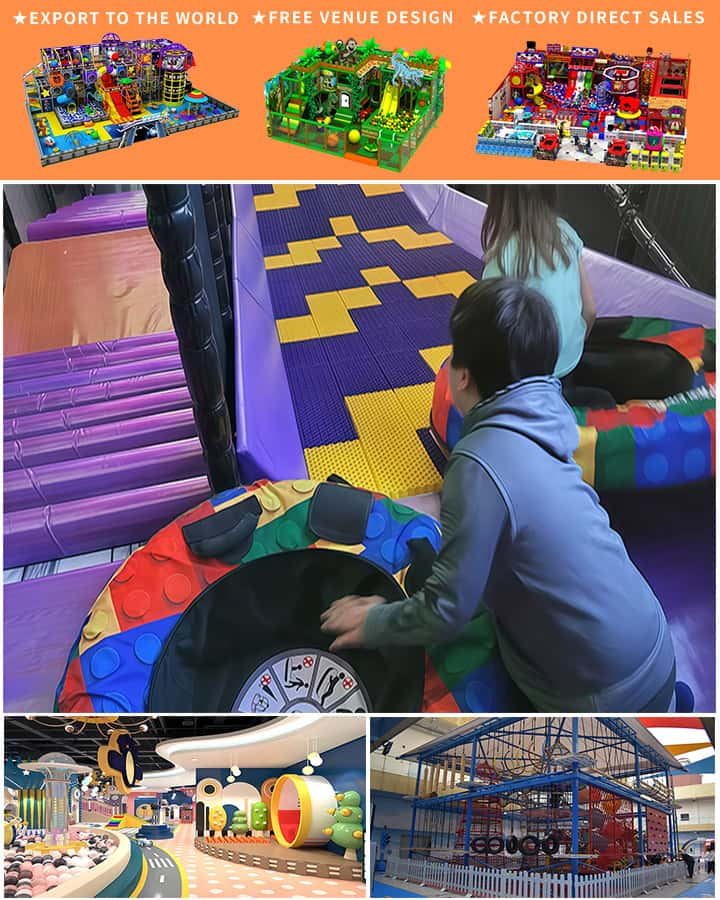When designing or updating a playground, selecting the appropriate equipment is crucial to ensure that it is safe, enjoyable, and beneficial for children of all ages and abilities. Playgrounds are not just about fun; they play an essential role in physical development, social interaction, and cognitive growth. Here’s a comprehensive guide on choosing the right playground equipment to create a vibrant and inclusive play area for your community.
Safety First
Safety is paramount when selecting playground equipment. Ensure that the equipment meets national safety standards, such as those set by the American Society for Testing and Materials (ASTM) and the Consumer Product Safety Commission (CPSC). Look for:
- Non-toxic materials: The equipment should be made from non-toxic, durable materials that can withstand heavy use and harsh weather conditions.
- Proper surfacing: Install appropriate impact-absorbing surfaces like rubber mats, mulch, or artificial turf to cushion falls and reduce injuries.
- Secure installation: Make sure that the equipment is installed correctly and regularly inspected for any signs of wear and tear.
Age-Appropriate Design
Children of different ages have varying needs and capabilities. It’s important to choose equipment that caters to these differences. Generally, playgrounds should offer areas for:
- Toddlers (ages 2-5): Low-to-the-ground equipment such as slides, small swings, and simple climbing structures. These should be designed with wide steps and gentle slopes.

- School-age children (ages 5-12): More challenging pieces like taller slides, climbing walls, seesaws, and monkey bars that encourage physical activity and coordination.
- Teenagers (ages 13+): Advanced equipment such as spinner bowls, multi-person seesaws, and complex climbing structures that promote strength and agility.
Accessibility
Inclusivity is key to making sure every child can enjoy the playground. Consider incorporating:
- Wheelchair-accessible equipment: Items like wheelchair-accessible carousels and merry-go-rounds.
- Sensory play elements: Features that stimulate different senses, such as textured panels, musical elements, and water features, which are beneficial for children with sensory processing disorders.
- Transfer stations: Platforms that allow children to move from a wheelchair or walker to regular playground equipment.
Educational Value
Playgrounds are also educational tools where children learn vital skills through play. Choose equipment that fosters learning and development:
- Interactive panels: Incorporate alphabet boards, number games, or puzzle panels that promote literacy and numeracy.
- Musical instruments: Drums, xylophones, and chimes help develop rhythm and coordination.
- Nature exploration: Elements like sand diggers, water tables, and planting beds encourage curiosity about the natural world.
Durability and Maintenance
Investing in high-quality, durable equipment will save money in the long run by minimizing replacements and repairs. Look for:
- UV-resistant plastics: To prevent fading and degradation from sun exposure.
- Stainless steel: For metal components to avoid rust and corrosion.
- Low-maintenance designs: Equipment that requires minimal upkeep will keep the playground looking great with less effort.
Community Involvement
Finally, involve the community in the decision-making process. Conduct surveys or hold town hall meetings to gather input from parents, children, and local residents. Their insights can provide valuable perspectives on what types of equipment are most desired and used.
In conclusion, creating the perfect playground involves a careful balance of safety, age-appropriateness, accessibility, educational value, durability, and community involvement. By thoughtfully selecting playground equipment, you can create a space that is not only enjoyable but also enriching for all children in your community.




